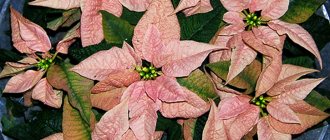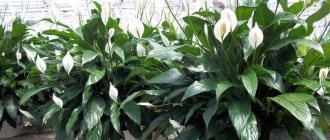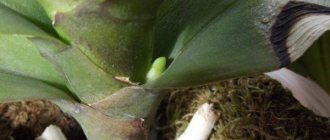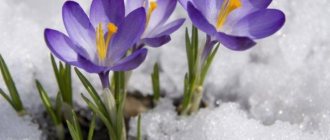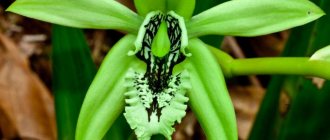Useful tips
With the onset of cold weather, most flowers usually enter a dormant period, and only a few plants are able to delight the eyes of their owners on frosty winter days with their chic, stunning flowers, bringing a great mood and feeling of summer into the house.
One such type of flower is the Christmas star or Poinsettia.
She is able to appear before us in all her glory in winter, when it is frosty and snowing outside.
If you want a beautiful flower to bloom in your home for Christmas
, resembling a star, then be sure to place Poinsettia on your windowsill.
Caring for this flower may not seem very easy at first, but for people
who have a patient character can handle any difficulties. And for lovers of true beauty who properly care for a flower, surround it with their care and love, carrying out all the necessary procedures on time, it is able to give unusual bright blooms.
How to care for a Christmas star at home
If the plant is not provided with proper care,
then it may begin to rot in the first days after you purchased it.
First of all, place the flower in the right place.
Usually this is the west side of the window. Make sure that the leaves of the Christmas star cannot come into contact with the glass, as they are so delicate that they will begin to fall off when interacting with a cold surface.
Basic rules for flower care
Regular watering of the plant
Warm, dry air can harm your Poinsettia flower.
If such a problem can be observed in your apartment, then you should either constantly spray the plant with warm, settled water at 20 degrees Celsius or purchase a special humidifier. These methods will additionally protect your flower from the appearance of spider mites, which are very destructive for the Christmas star.
From December to March, during the period when the Christmas star will bloom
, it should be provided with regular watering. The flower will also need water during the period of active growth, which occurs in the summer months.
Do not under any circumstances allow this
so that the soil in the pot dries out, but you shouldn’t allow water to stagnate either. If you find that the soil in the pot has begun to dry out, immediately water the plant and after an hour, drain all the water from the pan.
Water for watering the Christmas star must be settled for several hours.
Feeding with necessary fertilizers:
Feeding the Christmas star is usually done in the spring
, when the plant has finished its dormant period or about a month after you transplanted it into new soil. Feed the flower once every three weeks. It is best to use granular or complex liquid fertilizers. Fertilizers should be applied until autumn.
Croton (Codiaeum)
Croton has attractive foliage. The codiaum flower is not decorative; it is often simply cut off so as not to take too much energy. This representative of the Molocaceae family has a truly fantastic coloring, combining several colors at once: red, yellow, green, pink and orange. This amazing combination will appeal to lovers of picturesque and rich shades. Codiaum also has an interesting feature: milky sap on the stems and leaves.
However, codiaum is demanding in care; it cannot be called undemanding or unpretentious:
- Pests: due to the poisonous sap they are rare, but under unfavorable conditions (dry air) scab infection is possible.
- Watering: water abundantly in spring and summer, only after the top layer of soil has dried to 1 cm. Reduce the amount of water in winter.
- Lighting: should be sufficient, but should be protected from direct light. Therefore, it should be placed on the east or west side.
- Temperature: in summer +20-23, in winter +17-18, t should not fall below 17 degrees. It is also important to avoid drafts.
- Reproduction: apical cuttings, grafting.
- Humidity: high; leaves must be regularly sprayed and dust removed.
Flowering and pruning of the plant
The Christmas star flower got its name because of its absolutely wonderful inflorescence.
, which in its entirety resembles a chic decoration. But the plant will give such flowers only if it is properly cared for.
Starting in October, the plant's daylight hours are reduced to 10 hours.
To do this, it is placed in a box or covered with a dark cloth on top.
With the onset of winter, the bush must be placed in a warm place
and provide it with bright lighting, as well as provide the plant with abundant watering.
Your Christmas Star
may bloom by the end of December, provided that you have fulfilled all the requirements correctly. You will be able to enjoy amazing beautiful flowers until spring.
Perhaps the leaves of the flower may begin to fall off. This is due to temperature changes in the room, excess moisture in the ground or drafts. Try to protect your plant from these unpleasant factors.
The Christmas star is pruned immediately after flowering.
You need to trim exactly half of the plant. Shoots approximately 15 cm in length should be left.
After you transplant the plant into a new pot, you should trim off all weak shoots.
Some Poinsettia branches that stand out from the total number are pruned during the growing season. Uneven or too long shoots are removed in order to maintain the shape of the bush.
What does clerodendrum look like and where does it come from?
Clerodendrum is a genus belonging to the Verbenaceae family. It has significant diversity. Among its more than 400 representatives there are trees, low shrubs, vines that shed their leaves for the winter and evergreen species.
Its homeland is tropical rainforests around the world. It is found in Southeast Asia, Oceania, Africa. Slightly less common in South and Central America.
The name of the plant is translated from Greek as “tree of fate.” This is due to the old belief that it can change your life for the better. It is not known exactly where the legend came from, but most consider the island of Java to be its homeland.
Where climate permits, clerodendrum is widely used in landscape design.
Flower growers sometimes, meaning clerodendrum, say “innocent love.” Perhaps this popular name is associated with the combined red and white flowers.
In nature, clerodendrum grows up to 3–5 m tall. But you can “shorten” it to a potted plant, up to about 1.5 m. Only regular formative pruning of the shoots will be required.
Most clerodendrums do not have a clearly defined stem. Instead, they have many shoots of approximately equal length and thickness that quickly become woody at the base. If there is still a trunk, it is most often hollow. In nature, ants will almost inevitably settle inside.
Clerodendrum leaves, depending on the type, are located opposite each other or in groups of three. Their shape is always heart-shaped, with a pointed tip. The length, depending on the type, is 7–15 cm. The surface of the leaf is dark green, uneven, and evokes associations with a quilt. “Bloats” are located between the veins. The edge can be either smooth or jagged. The leaves are thin to the touch, but dense and harsh.
Even non-flowering clerodendrum looks quite impressive
The main thing that attracts gardeners to clerodendrum is the flowers. In suitable conditions, the plant blooms very profusely, literally becoming covered with inflorescences in the form of a shield or panicle. Each inflorescence consists of 4–20 flowers. They are small (2–3 cm in diameter), but this is more than compensated by quantity.
In nature, the plant blooms from mid-spring to autumn. But at home, especially in winter gardens, greenhouses, greenhouses, you can achieve almost year-round flowering. Most species have a very special smell of flowers and leaves, characteristic only of this clerodendrum.
The fruit of the clerodendrum is similar to a berry, although from a botanical point of view it is a drupe. There are always 4 nests in it, in which 2–4 seeds ripen.
If you do not need clerodendrum seeds, cut off the faded inflorescences
A non-flowering plant can also be used in design. This is an excellent material for a trellis. It grows very quickly along guides (supports, wire), creating a continuous carpet of leaves.
Peculiarities of reproduction of the Christmas star
If Poinsettia has been in your home for at least two seasons
, then it’s time to start propagating it, for which bush cuttings are ideal.
The Christmas star is pruned at the beginning or in the second half of summer.
, but without delaying this period until the end of August. In order to properly maintain a pruned bush, the room temperature should be about 30 degrees.
If the temperature does not reach the required level
, then you need to create a greenhouse effect or simply place the bush in a greenhouse.
The cuttings needed to propagate the Christmas star should be no more than ten cm.
Three healthy green leaves must grow on it.
It is necessary to prepare good, not dry soil with drainage and plant the shoot in it.
For new shoots to appear on the bush, the same humidity should be maintained for several weeks.
Always make sure the plant's soil is clean. Be sure to spray the plant several times a day to prevent pests. To avoid burns from direct sunlight, always alternate between shade and bright sun.
Maranta
An attractive feature of semolina is its bright red veins. A combination of shades of scarlet, dark green and light green distinguishes this decorative foliage plant. It belongs to the family Maranthidae.
Growing conditions for this tropical exotic:
- Pests: spider mites.
- Lighting: Bright but diffused light, but can tolerate some shading.
- Humidity: high; Regular spraying is required; Showering periodically is also helpful.
- Temperature: in spring and summer +22-24, in winter and autumn +18-20; protection from drafts is important.
- Reproduction: by dividing the bush, apical cuttings.
- Watering: during the warm season, water abundantly, keep the soil moderately moist, and do not allow the soil surface to dry out. In winter, this treatment should be carried out less frequently; the surface of the top layer of soil should dry out.
Flower diseases and pests
Typically, the Christmas star is susceptible to attack by mealybugs.
These tiny insects can instantly spread throughout the plant, feeding on its sap, leaving behind a sticky coating on the surface of the leaves. If you do not take the necessary measures in time, the flower will instantly begin to stop growing, wither and, ultimately, it will certainly die.
It is recommended to wipe the leaves with alcohol against this scourge.
or a solution of laundry soap. In order to achieve maximum effect, it is better to use proven drugs: “Commander”, “Fitoverm”.
To fight spider mites
, you need to spray the stems of the plant and wipe its leaves with tobacco infusion. In the future, try to keep containers of water near the plant and spray the flower more often.
From a fungus called gray rot
, can protect the removal of damaged leaves and spraying the plant with antifungal drugs.
If you suddenly find damage or some kind of plaque on the leaves of your plant, then it may be due to the incorrect composition of the soil. Prepare new soil or buy it from a flower shop.
Begonia royal
Also called Begonia rex. It blooms rather inconspicuously, so flowering cannot be called the main advantage of a representative of the begoniaceae family. The main beauty of the royal begonia is its variegated and lush leaves.
- Pests: thrips.
- Light: bright, but sunlight should be diffused; direct rays can burn the leaves.
- Humidity: normal or slightly increased.
- Temperature: about 19-22 degrees, in winter about 16 degrees.
- Reproduction: seeds, cuttings, division of the root system.
- Watering: abundant, it is necessary to moisten as the top layer dries.
Can the Christmas star flower be poisonous?
The Christmas star has milky sap inside its stem.
According to the majority, it is poisonous. But this is not true. In order to somehow suffer from this flower and get poisoned, a person or animal needs to eat about 500 leaves from this plant at a time.
There is still a slight threat to the juice of this plant.
If it gets on the skin, dermatitis may occur in that group of people who are intolerant to the milky sap of similar plants.
If you belong to this category of people, then when working with a flower, just wear gloves and wash your hands very thoroughly
after working with the plant.
Scientists have officially proven
the harmlessness of the Christmas star for animals and humans.
At first glance, caring for a Christmas star flower may not seem very easy.
, and the plant itself is too capricious, but you must agree that it’s nice to receive a New Year’s gift in the form of a gorgeous, bright flower, knowing that it was you who grew it with a certain amount of love and care.
Vallota
To grow these indoor red flowers, plant a plant bulb in a twelve-centimeter pot in the spring. Leave its top half uncovered with soil.
In winter, wallot grows well in a cool room (on an insulated loggia), periodically remove faded leaves and flowers, and let the soil dry out a little before watering. At the end of summer, umbels of flowers appear on the plant. Do not replant the wallot until the bulbs begin to overcrowd the pot.
Hypoestes
Hippoestes belongs to Acanthaceae, it will decorate and enliven any room. The variety of leaves will delight lovers of varied and unusual colors and patterns.
Features of hypoesthesia:
- Pests: not susceptible.
- Lighting: bright diffused.
- Humidity: high, spraying is recommended.
- Temperature: in spring and summer +22-25°C, in winter +17-18.
- Reproduction: cuttings, seeds.
- Watering: During the warm season, water thoroughly when the top layer of soil dries out. In winter, add moisture 1-2 times after the top layer of soil has dried.
Since red is known as the color of wealth and prosperity, it is believed that its presence in the home can attract success. These thoughts may not be based on fact, but it is fact, not fiction, that color therapy works and that regular eye contact improves mood. Looking at a colorful houseplant with a reddish hue can lift your spirits, and being in a good mood is the best way to feel good.
